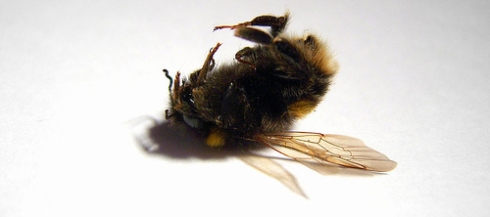View original
By Russ McSpadden / Earth First! Newswire
[The text of this work is free to share and distribute under the following
Creative Commons License CC-BY-ND
3.0]
Pollinators participate in the
sexual-reproduction of plants. When you eat an almond, beet, watermelon or sip
on coffee, you’re partaking of an ancient relationship between pollinators and
flowers. But since the 1990s, worldwide bee health has been in decline and most
evidence points to toxic pesticides created by Shell and Bayer and the loss of
genetic biodiversity due to the proliferation of GMO monocrops created in
laboratories by biotech companies like Monsanto.
But never worry, those real life pollinators—the
birds and the bees, as they say—may soon be irrelevant to the food needs of
civilization. Harvard roboticists are developing a solution to the crisis:
swarms of tiny robot bees made of titanium and plastic that can pollinate those
vast dystopian fields of GMO cash crops.
The Harvard Microrobotics Lab has been working on its Micro Air
Vehicles Project since early 2009. Borrowing from the biomechanics and social
organization of bees, the team of researchers is undergoing the creation of tiny
winged robots to fly from flower to flower, immune to the toxins dripping from
petals, to spread pollen. They even believe that they will soon be able to
program the robobees to live in an artificial hive, coordinate algorithms and
communicate amongst themselves about methods of pollination and location of
particular crops.
Of course, published reports from the lab also
describe potential
military uses—surveillance and mapping—but the dime-sized cyber-bees have
yet to be outfitted with neurotoxin tipped stingers.
If you think this bee news is strange, be sure to check out this recent
article from the newswire: Anarchist Beekeepers Claim Responsibility for U.S. Drone Attack
Related article:



No hay comentarios:
Publicar un comentario